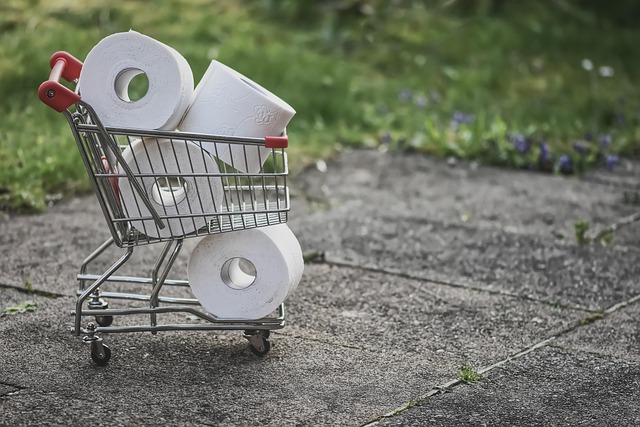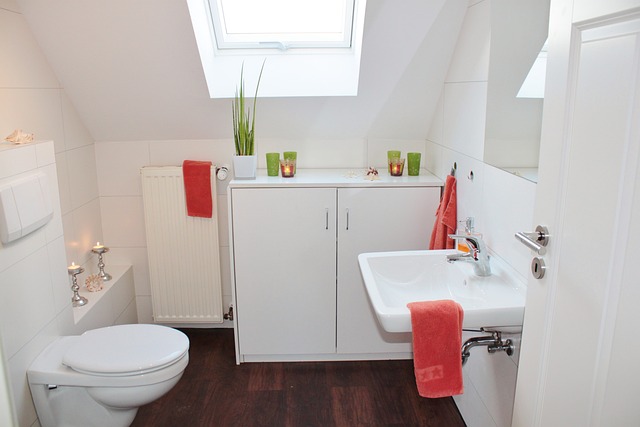Toilet installation requires understanding key components like bowl, tank, gaskets, and seals for a secure fit. Choose the right toilet based on space, type (gravity-fed, low-flow), and features. Prepare your bathroom by assessing layout, plumbing connections, and clearing obstacles. Follow a step-by-step guide for removal, installation, and trimming to prevent leaks. Ensure longevity with final touches, regular maintenance, leak checks, and part inspections.
“Unsure where to begin with your toilet setup? This comprehensive guide breaks down every step of the Toilet Installation process, from understanding crucial components to final touches. We’ll walk you through choosing the right toilet for your space, preparing your bathroom, and providing a detailed, easy-to-follow step-by-step installation guide. By the end, you’ll be equipped with the knowledge to ensure a smooth and successful toilet installation.”
Understanding Toilet Components: A Comprehensive Overview

Toilet installation involves understanding a variety of components that work together seamlessly for optimal functionality. The basic parts include the bowl, tank, and basin, each serving distinct purposes. The toilet bowl is the visible part where waste is collected, while the tank, often hidden behind the bowl, houses crucial mechanisms like the flush valve and fill valve. These components control water flow, ensuring a proper flush every time.
Further complexities include gaskets and seals that prevent leaks, and various adjustable parts tailored to different floor heights and plumbing setups. Knowing these components and their functions is key during toilet installation, allowing for precise adjustments and ensuring a secure, efficient, and trouble-free toilet setup.
Choosing the Right Toilet for Your Space

When considering a toilet installation, choosing the right toilet for your space is paramount. It’s essential to measure your bathroom dimensions and consider the available space before making a purchase. Toilets come in various sizes, from compact models suitable for small bathrooms to larger, more traditional styles. The right fit ensures optimal functionality and aesthetics, enhancing your overall bathroom experience.
Additionally, toilet types play a crucial role in this decision. You can opt for gravity-fed toilets, which are common and cost-effective, or consider low-flow or water-efficient models that conserve water and reduce environmental impact. Modern options include smart toilets with advanced features like automatic flushing and integrated bidets, offering convenience and luxury. Aligning your choice with your bathroom’s layout and personal preferences ensures a successful toilet installation.
Preparing Your Bathroom for Installation

Before beginning any toilet installation, preparing your bathroom is a crucial step in the process. This involves assessing the current layout and ensuring that the new toilet fits seamlessly within the space. Check for enough clearance around the intended placement area – both for the toilet itself and for anyone using it. Remove any obstacles or fixtures that might interfere with the installation process or limit accessibility after the setup is complete.
It’s also important to verify the plumbing connections in your bathroom. Ensure you have access to the water supply lines and waste pipes required for a successful toilet installation. This may involve turning off the water valves under the sink or at the main supply, allowing any residual water to drain, and inspecting the pipes for signs of damage or corrosion. Proper preparation not only ensures a smoother installation but also reduces the risk of leaks or other post-installation issues.
Step-by-Step Guide to Toilet Installation

Toilet Installation: A Step-by-Step Guide
1. Remove the Old Toilet: Start by turning off the water supply to your toilet. Then, use a wrench or a screwdriver to carefully remove the old toilet from the floor. This involves detaching the toilet from the bolts holding it in place and lifting it out of the toilet base. Make sure to have a bucket handy to catch any residual water remaining in the tank.
2. Prepare the New Toilet: Unpack your new toilet and inspect all parts for any damage. Ensure the bowl is clean and free from debris. Place the new toilet on top of the existing toilet base, aligning it with the holes for the bolts. Check if the flange (the circular seal between the toilet and the floor) fits properly and makes contact with the subfloor.
Plumbing Connections and Trimming

After successfully placing your new toilet, the next crucial step in a smooth Toilet Installation process is plumbing connections and trimming. This involves connecting the toilet’s water supply lines and waste pipes to your home’s existing plumbing system. It’s important to ensure that these connections are secure and leak-free by using the appropriate fittings and sealants.
Proper trimming, which includes adjusting the height of the toilet and ensuring it’s level, is equally vital. This step not only ensures a neat, finished look but also facilitates easy cleaning and maintenance in the future. Remember to check local building codes and consider hiring a professional for complex plumbing tasks related to Toilet Installation to guarantee a safe and compliant setup.
Final Touches and Maintenance Tips

After successfully installing your new toilet, it’s time to focus on the final touches and maintenance practices that will ensure its longevity and optimal performance. Begin by checking all connections and ensuring no leaks are present. Tighten any loose fittings or replace gaskets if needed. Properly adjust the float and fill valve for accurate flushing mechanisms. Fill the tank with water and test each flush to confirm everything functions smoothly. Regular maintenance includes cleaning the toilet bowl and tank regularly, using toilet cleaners designed for this purpose. Avoid overloading the toilet with excessive paper products; use only recommended amounts. Additionally, periodic checks of the toilet’s parts for wear and tear are essential, allowing you to address any issues promptly. Remember, regular upkeep can prevent future problems and make your toilet installation last for years to come.
